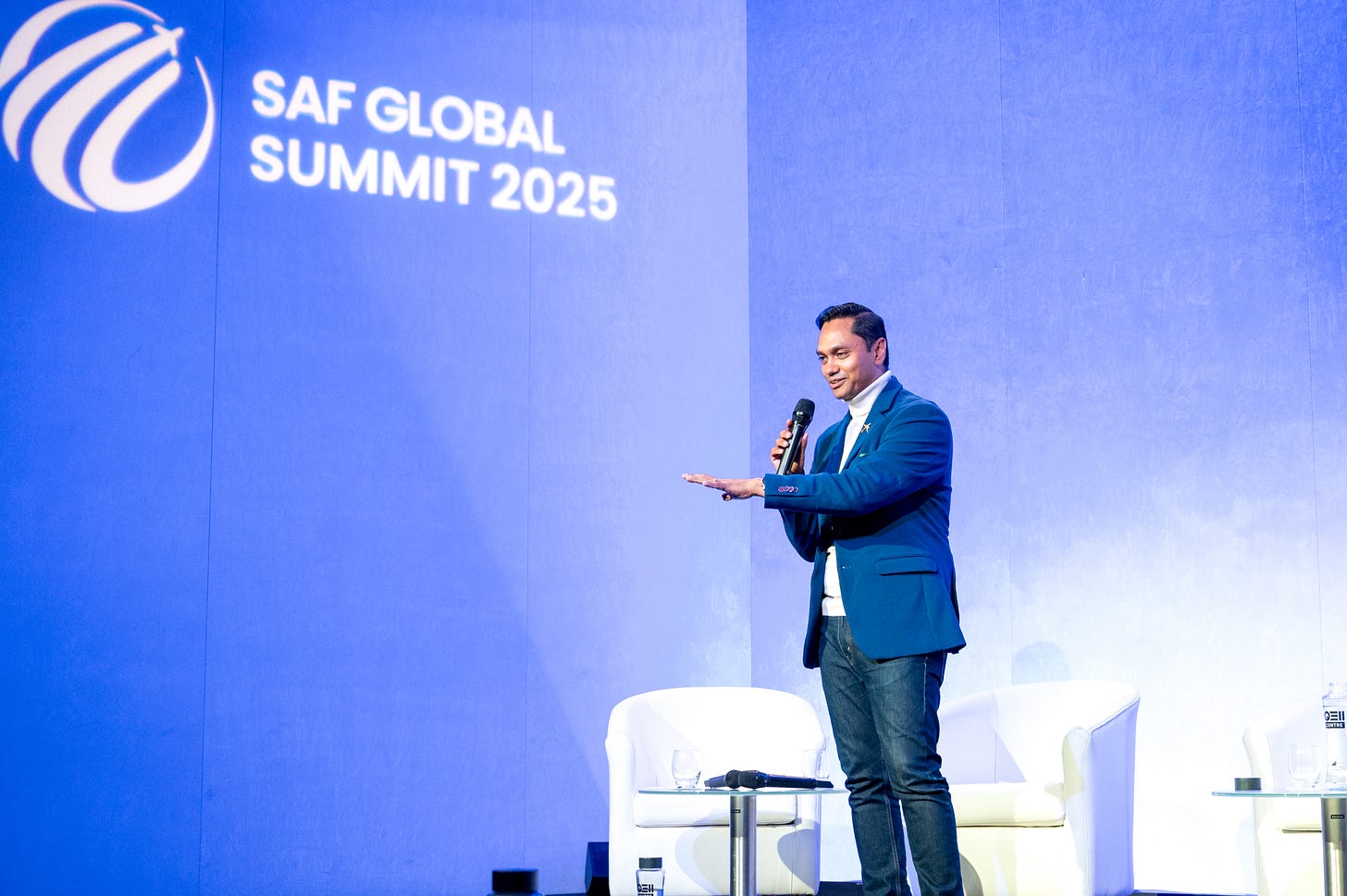Beyond the hype: The realities of scaling sustainable aviation fuel
Industry leaders say that cost, technology, and politics threaten to keep SAF from taking off, with 2026 shaping up to be a make-or-break year.
Sustainable aviation fuel (SAF) is billed as aviation’s immediate, drop-in solution to decarbonise flying. But scaling it is proving more complex than optimistic headlines suggest.
At the SAF Global Summit in London on September 3, 2025, a panel chaired by Shashank Nigam, founder of SimpliFlying, went beyond the hype to explore the economic, technological, and political realities of SAF.
The session, “Embracing Next-Gen Breakthroughs in Sustainable Aviation,” brought together perspectives from energy majors, innovators, policymakers, and regulators.
The 2030 price parity problem
The biggest obstacle to wider SAF adoption remains cost. SAF today is two to seven times more expensive than conventional jet fuel. Nikunj Nangalia, Chief Commercial Officer at Essar Future Energy, was blunt:
“The price gap…is still quite large. I see at least five to ten years before we might be able to talk about parity, but not before 2030.”

For airlines, the gap is not academic. Elvis Ebikade, Director of Aviation at Bioleum Corporation and formerly at Southwest Airlines, described the procurement dilemma: “In the end, if we can’t see a clear path to parity, then it’s just hard.”
Ebikade pointed out that a mix of federal tax credits, state incentives, and volatile renewable credits make for a complicated mix, but not yet necessarily a commercially viable one.
A spectrum of pathways
If cost is the barrier, technology is the opportunity. Nigam pressed the panel on whether the industry risks narrowing its bets too quickly.
Ebikade warned against this kind of thinking: “There are eight ASTM-approved pathways today, and more than ten in the pipeline. Scientifically, it’s not HEFA versus PTL. We need all of them.”
Meanwhile, Ian Collier of direct air capture company 1PointFive positioned DAC as a complement to SAF: as an e-Fuels feedstock, and also by offering carbon removal credits:
“You’re never going to get to zero carbon with SAF alone. Pairing SAF with removals is going to be critical.”
David Byard, who leads advanced fuels technology at BP, stressed the challenge of adapting existing refineries: “It’s not easy. Different feedstocks bring challenges of acidity, corrosion, fouling, and catalyst deactivation. We test these at pilot scale in Hull, but scaling remains complex.”
Nigam tied the points together:
“It’s not just about a fuel, it’s about building a system that can work across pathways and across markets.”
India as a cost disruptor
Cost leadership may not come from Europe or North America, but from the so-called Global South. Nangalia highlighted India’s momentum and potential for sustainability leadership:
“Recent green ammonia tenders in India achieved less than $600 per ton, compared to close to $900 in Europe. At Essar, we are developing a one-million-ton SAF project in India. We are very sure it will be cost-competitive.”
The message: assumptions about where innovation and price leadership will come from may be misplaced.
The political test
Moreover, technology alone is not enough — political alignment will be decisive.
Ebikade posed the challenge plainly:
“Why do we need sustainable fuels? Because when you go to a president, it’s not just why is this good for aviation, it’s why is this good for the country.”
He then pointed out the gulf between priorities in North and South: “You tell a country like Nigeria it needs sustainable fuels. Why? We don’t even have consistent power.”
This reinforces the need for SAF to be positioned as an economic benefit, and not just a cost, especially in areas where there are currently no mandates.
Regulation, reality, and credibility
Regulators are experimenting with ways to accelerate learning. Helen Leadbetter, Technical Geography Lead at the UK Civil Aviation Authority, described the approach when it comes to hydrogen aviation, which provides possible lessons for the SAF industry:
“We’ve opened a hydrogen sandbox, working with 13 organisations across the aviation sector to test real-world applications rather than just theory.”
Ultimately however, bold regulatory pilots cannot fully insulate SAF from shifting politics. Sarah Macintosh, Director of Cleantech for UK, issued a stark reminder:
“We’ve seen politicians within the same party reverse mandates. Consumers have been told for years that renewables would drive down the cost of electricity, and instead they’ve seen (energy) prices soar. You don’t get to make that mistake twice.”
A make-or-break year
Ultimately, the panel agreed that the industry faces an inflexion point. Ebikade warned:
“If by next year all of those e-SAF projects don’t get to the final investment decision, then we have to go back to the drawing board.”
Nigam summed it up aptly: “It has to be a sustainable system, in order for there to be a sustainable environment.” In other words, future credibility with policymakers, consumers, and investors will be crucial for the SAF industry.
Panelists:
Chair: Shashank Nigam, Founder, SimpliFlying. Panellists: Ian Collier (1PointFive), Nikunj Nangalia (Essar Future Energy), Elvis Ebikade (Bioleum Corporation), Sarah Mackintosh (Cleantech for UK), Helen Leadbetter (UK Civil Aviation Authority), David Byard (BP)




